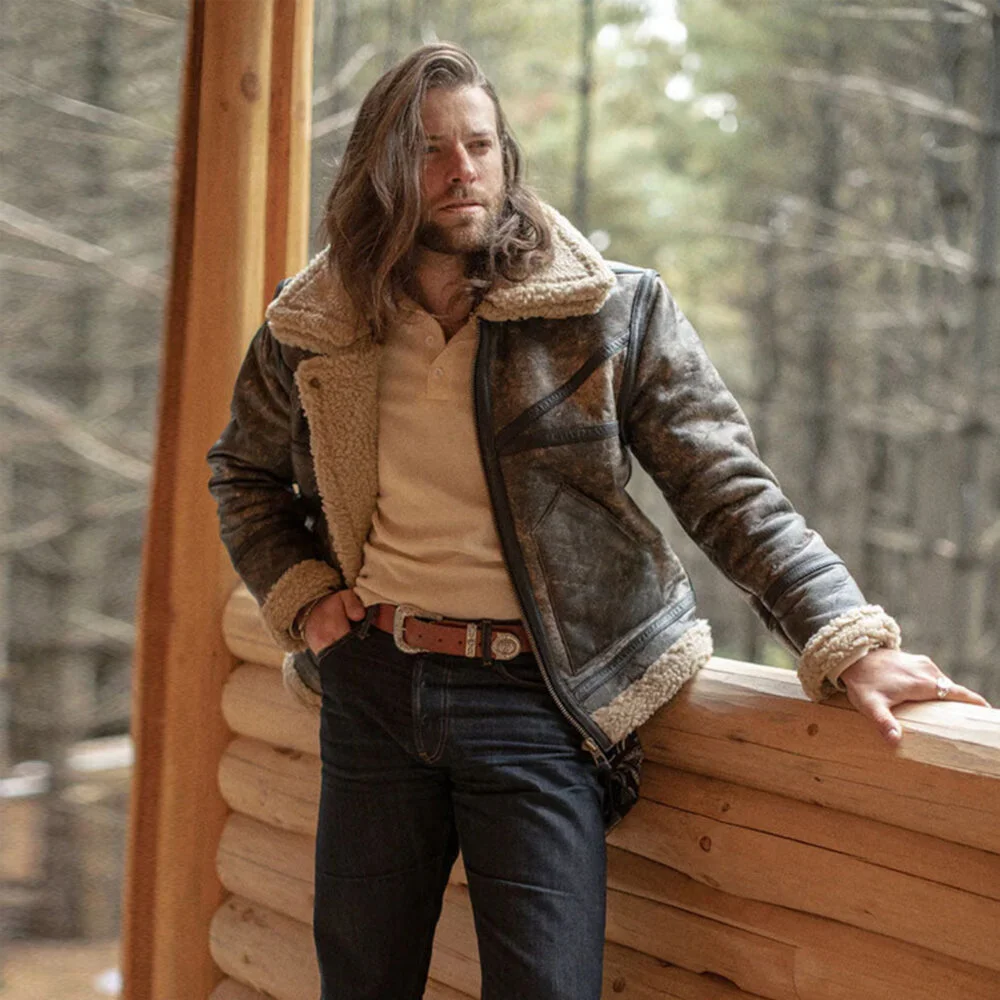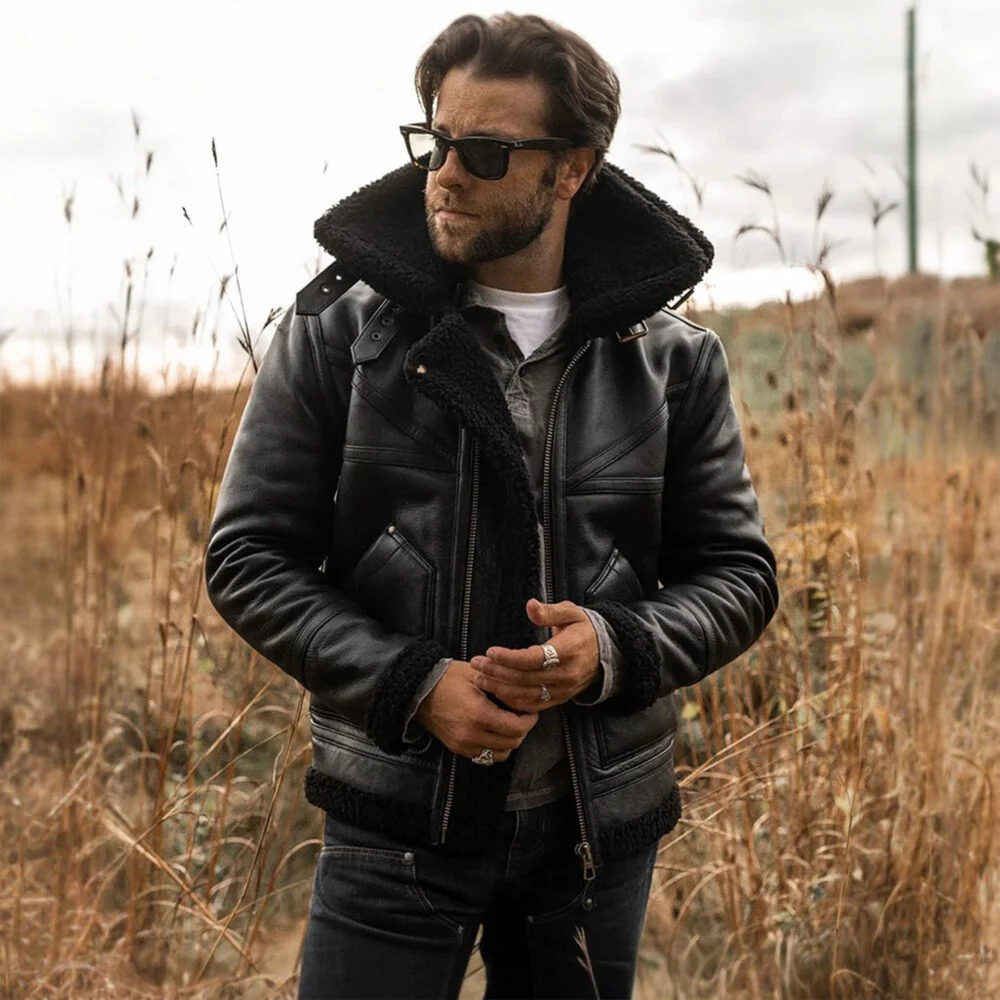Which is Better for You Sheepskin vs. Shearling ?
Understanding Sheepskin and Shearling
Sheepskin Jacket and shearling jacket are two materials derived from sheep, both highly valued in fashion and home decor for their unique properties and luxurious feel. Understanding the distinctions between these two types of woolen products is essential for making an informed choice about which one suits your needs better.

Sheepskin refers specifically to the hide of a sheep that has undergone a tanning process while retaining the wool. This method preserves the wool fibers, creating a thick, soft leather material that features both the skin and fur on one side. The dual texture of sheepskin provides excellent insulation, making it perfect for colder climates. Additionally, sheepskin is well-known for its breathability, offering comfort in various temperatures. The natural lanolin found in sheepskin also lends it inherent hypoallergenic qualities, making it a popular choice for individuals with sensitive skin.
On the other hand, shearling Leather is a specific type of sheepskin; it is sheepskin that has been sheared to a uniform length. This process results in a smoother exterior and a plush, soft interior that is highly sought after for garments and accessories, including coats, boots, and blankets. The distinctive shearling texture is prized not only for its aesthetic appeal but also for its thermal properties. It provides exceptional warmth while remaining lightweight, making it an excellent option for cold-weather wear. However, shearling may require more careful maintenance than sheepskin due to its shorter wool length and the potential for wear over time.

Consumers should consider their specific needs, preferences, and intended use when choosing between these two luxurious materials.
Benefits of Sheepskin
Sheepskin, a natural material derived from the hides of sheep, offers a plethora of advantages that make it highly sought after in various applications. One of its most notable characteristics is its exceptional breathability. Unlike synthetic alternatives, sheepskin allows air to circulate freely, which helps regulate body temperature, making it ideal for both warm and cool climates.

Another key advantage of sheepskin is its moisture-wicking ability. This natural fiber absorbs moisture away from the skin, keeping the user dry and comfortable. This feature is especially valuable in slippers and jackets, which can contribute to an enjoyable wearing experience. The ability of sheepskin to manage moisture effectively, coupled with its insulating properties, makes it a favored material for cold-weather apparel, as it retains warmth without causing overheating.
The material offers a unique cushioning effect that can alleviate pressure points, making it an excellent choice for use in healthcare applications. Sheepskin medical pads and supports provide relief for individuals confined to beds or wheelchairs, significantly enhancing their quality of life by reducing the risk of pressure sores.

Unlike many synthetic materials that can wear out quickly, high-quality sheepskin products can last for years, maintaining their softness and aesthetic appeal. This combination of longevity, comfort, and support makes sheepskin a preferred choice for those seeking premium materials in rugs, footwear, and outerwear, contributing to its enduring popularity in various consumer markets.
Advantages of Shearling
Shearling, a unique textile derived from sheepskin, offers a range of distinct advantages that contribute to its growing popularity in the fashion industry. One of the most striking features of shearling is its sleek and sophisticated appearance. The luxurious texture and natural sheen of shearling make it an ideal choice for high-fashion clothing and accessories, appealing to those who seek both elegance and functionality. Designers often incorporate shearling into their collections, recognizing its potential to elevate both style and wearability across various fashion contexts.
Beyond aesthetics, shearling provides exceptional insulation and warmth, which is particularly important for cold-weather apparel. The unique structure of shearling fibers traps air, creating a natural barrier against the cold while allowing moisture to escape. This means wearers can remain warm even in wet conditions, making shearling an ideal choice for winter coats, boots, and other outerwear staples.

This quality allows shearling garments to deliver comfort without the bulk often associated with heavier materials. For individuals who prioritize mobility and ease of wear in their wardrobe, this lightweight characteristic proves to be a game-changer. Shearling garments, while providing warmth and sophistication, do not compromise on comfort, making them suitable for both casual and formal occasions.
In conclusion, the unique benefits of shearling—including its upscale aesthetic appeal, superior insulation in challenging weather conditions, and lightweight comfort—make it a compelling option for those in search of quality winter attire.
Choosing the Right Material for Your Needs
When deciding between sheepskin and shearling, it is essential to evaluate your personal needs and preferences carefully. Both materials have distinct characteristics that cater to different purposes, making an informed choice vital in selecting the perfect option for your lifestyle.
Start by considering the intended use of the material. For casual wear, sheepskin may be more appealing due to its softness and flexibility, allowing for relaxed comfort.
Climate is another critical factor to evaluate. However, shearling provides exceptional insulation, making it particularly advantageous in colder climates. Understanding your local weather patterns will help inform which material aligns best with your needs.
Maintenance requirements play a significant role in your decision-making process. Sheepskin generally requires less upkeep, making it easier to maintain over time. In contrast, shearling may necessitate more specialized care, ensuring its structure and quality remain intact. If you lead a busy lifestyle, the lower maintenance of sheepskin might be a decisive factor.
Finally, consider your budget. Typically, shearling is more expensive due to its premium qualities and durability. Assessing your financial boundaries will help you choose between these luxurious options without compromising on quality or function.
To ensure longevity and preserved quality, proper care is essential. For both materials, avoid direct sunlight and excessive moisture, and use specialized cleaners designed for leather. By adhering to these practical tips, you can enhance the lifespan of your chosen material, ultimately empowering you to make the best decision for your unique needs.

